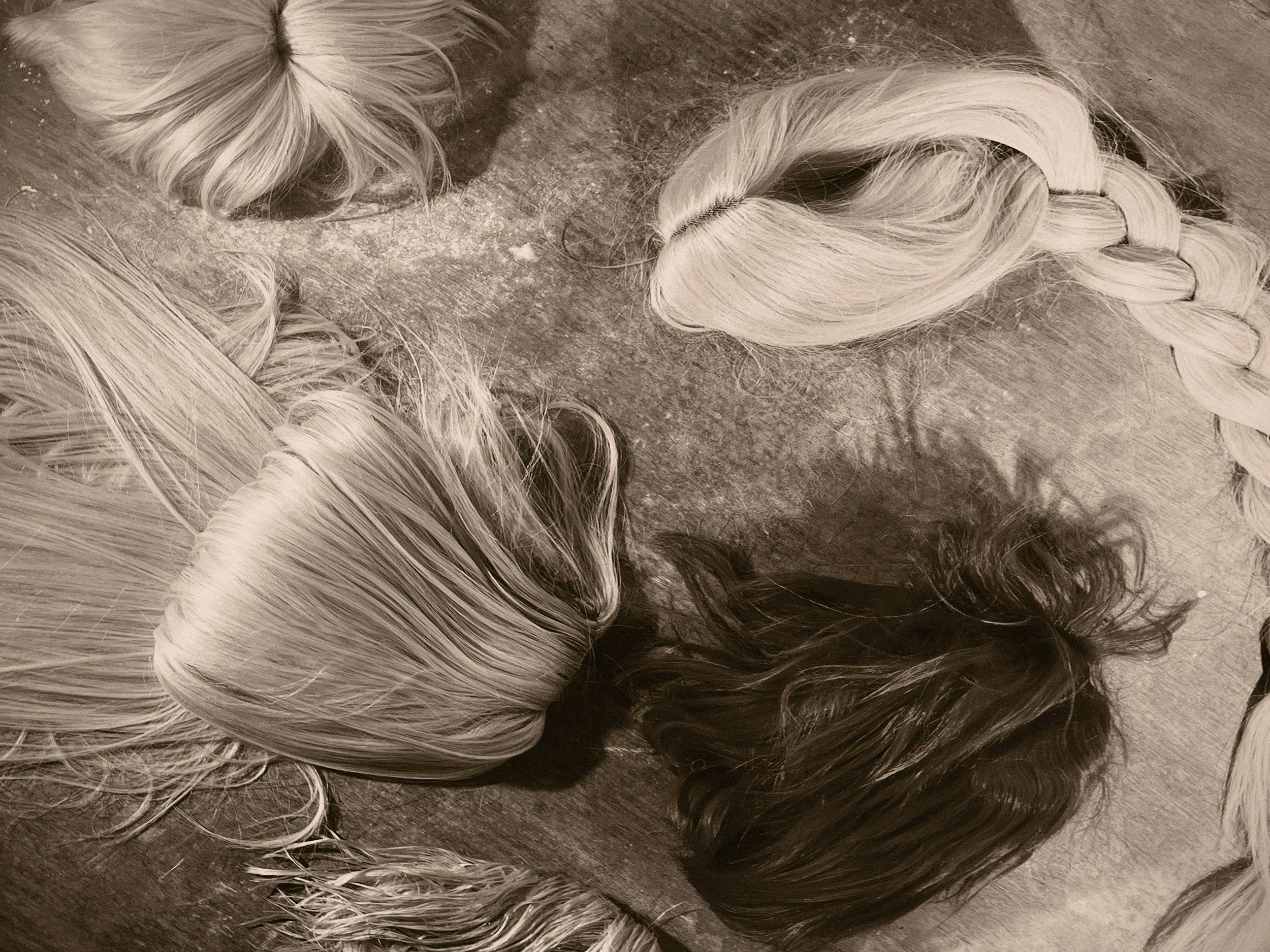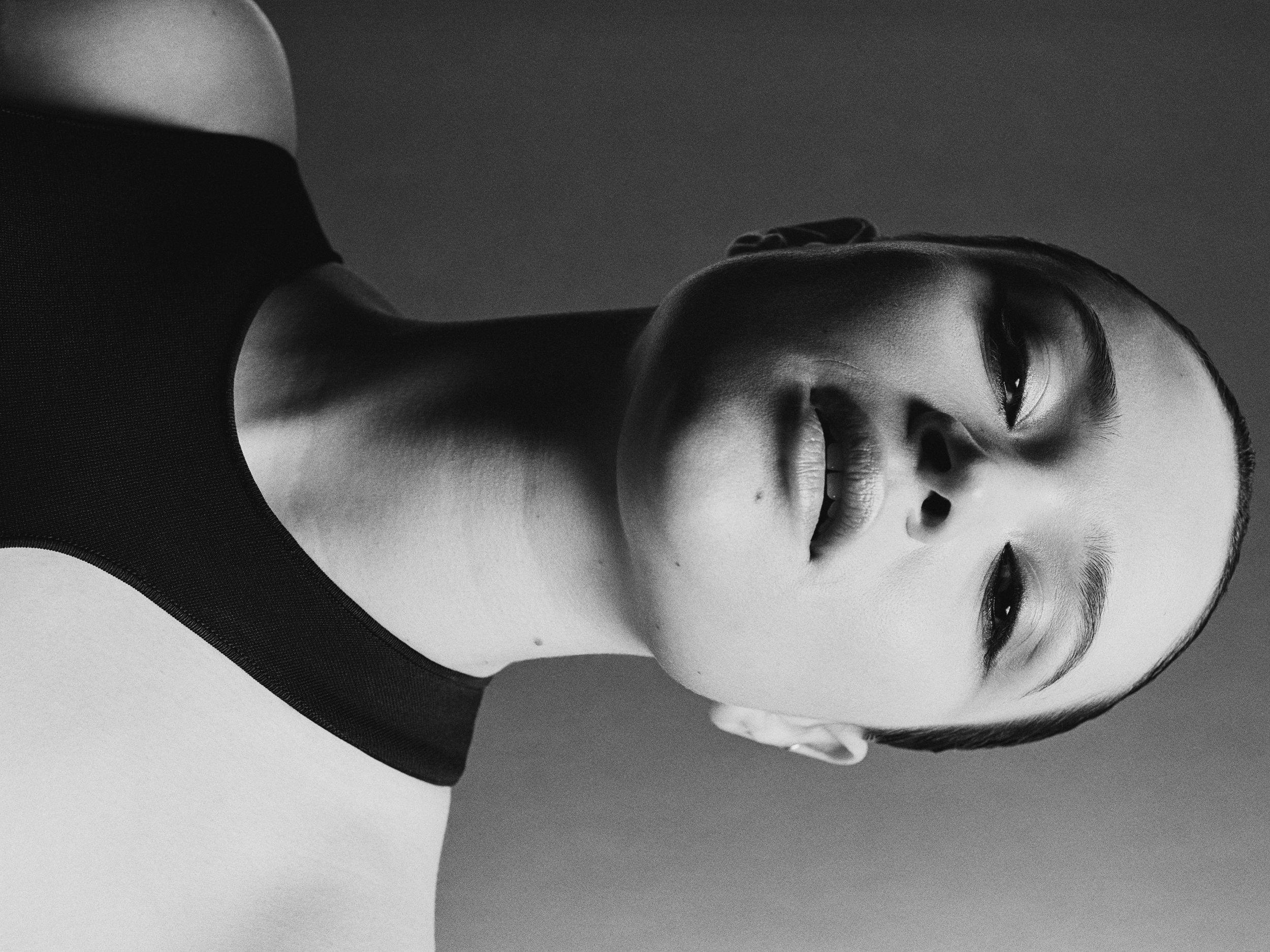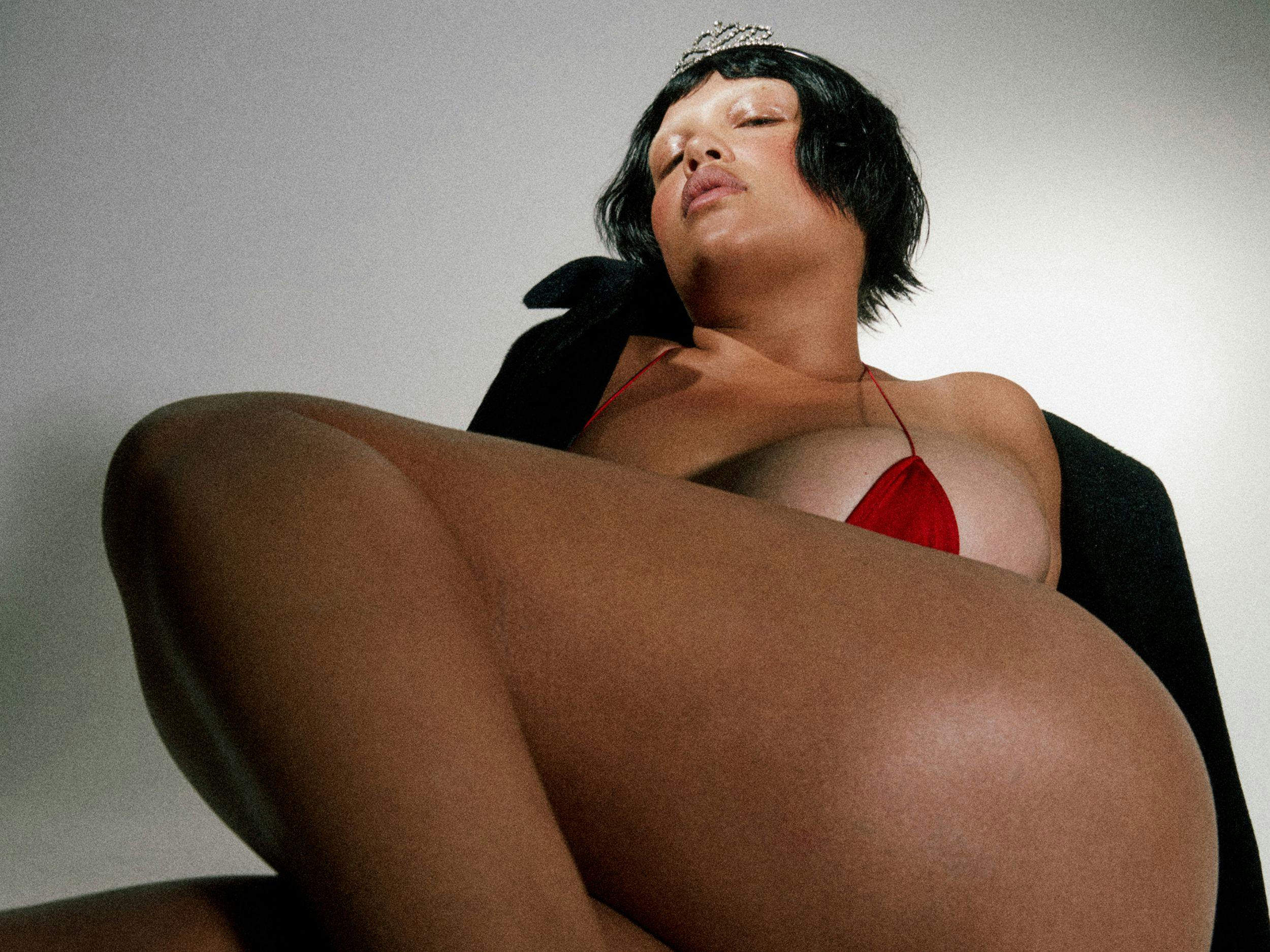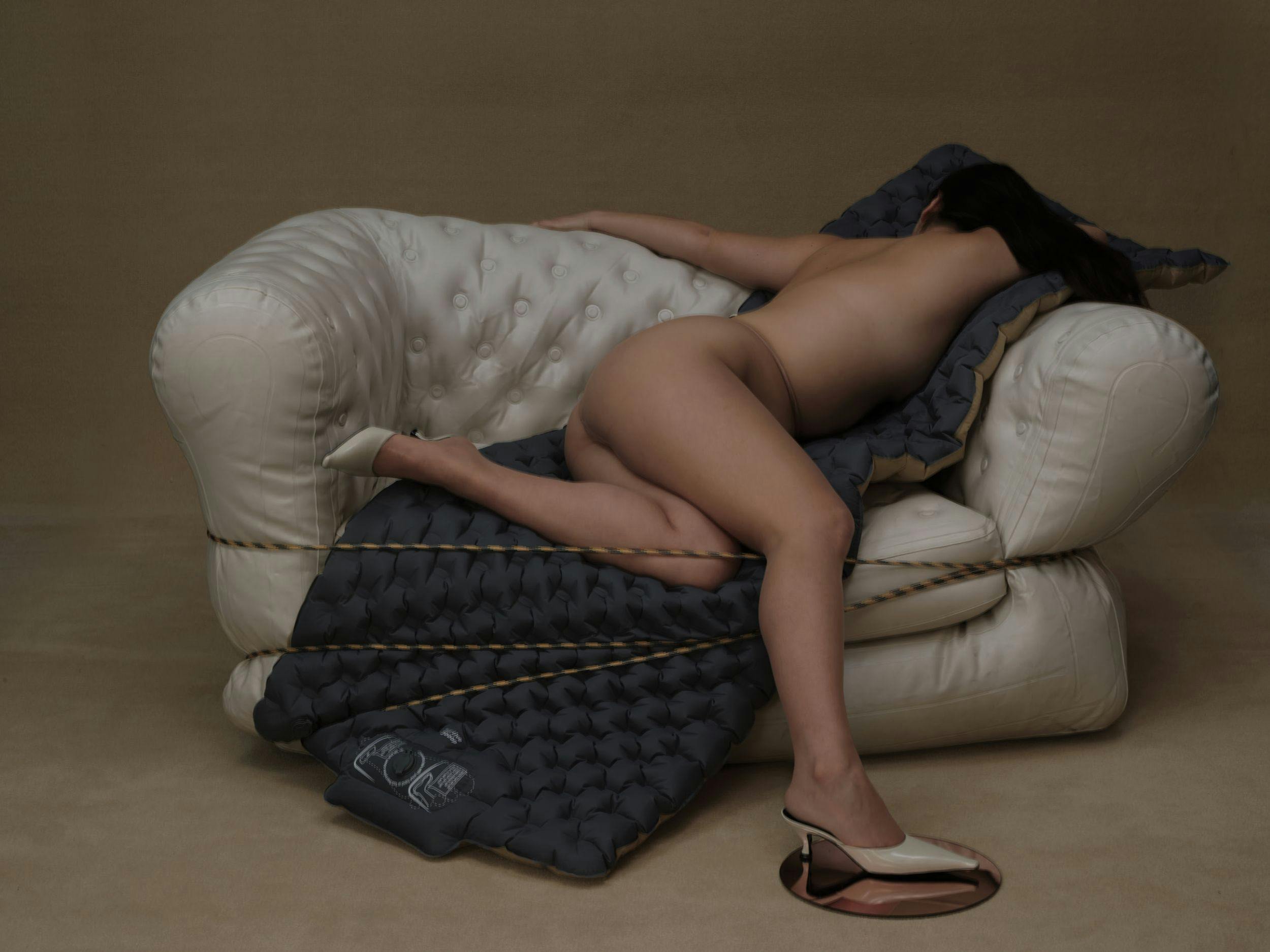
LEFT: DRESS by Iseder. RIGHT: T-SHIRT by Emily Dawn Long.
Mallrat Finds Magic in the Everyday
There is a particular kind of light—the thin, momentary kind that filters through the slats of window blinds just before dusk—that seems to belong more to memory than to the present. It’s this intangible shimmer that Grace Shaw has always tried to trap inside her music. As Mallrat, the 26-year-old Australian artist has emerged not merely as a pop-adjacent singer-songwriter, but as an artist who finds strangeness in the ordinary, shaping songs that feel intimate and slightly unreal. Her latest album, Light hit my face like a straight right, makes explicit what has always lingered at the edges of her sound: a fascination with the moment the familiar tilts into something spectral.
The title itself—a juxtaposition of violence and illumination—captures the strange duality of her work. For Shaw, whose songwriting style eschews neat autobiographical narrative in favor of emotional texture and abstraction, lyrics don’t signify, they linger. “When I’m writing songs, it’s really intuitive,” she says. “I don’t ever sit down and think, ‘I want to write about this specific event or concept’…I think that in the process I’m following intuition, which is subconsciously influenced by what’s happening in my world.” Her creative process is less an act of deliberate expression than one of subconscious curation—over time, feelings and fragments rise to the surface, shaping themselves into songs.

LEFT: T-SHIRT by Emily Dawn Long. SKIRT by Collina Strada. TIGHTS by Taottao. RIGHT: VEST by Sam Finger. DRESS by Iseder. TIGHTS by Grimstargirl.
A lack of conceptual premeditation doesn’t mean the work lacks cohesion. Quite the opposite: Shaw’s music, perhaps precisely because it is so driven by instinct rather than agenda, often achieves a unity that evades more programmatic albums. In the case of Light hit my face, the recurring motif of light only revealed itself to Shaw once the songs were complete and sequenced. It was as if some hidden through-line had written itself while she wasn’t looking. It’s not just instinct or accident—it’s a process that inherently resists clear planning; it’s a mode of working that resists the hyper-branded intentionality of the contemporary pop landscape, where every album seems to come pre-packaged with a backstory, a graphic identity, and a distinct target audience.
What Shaw offers instead is a kind of ambient sincerity—her songs feel emotionally sharp, even when meaning is elusive. Her lyrics are often fragmentary, her arrangements spacious and unhurried, but the feeling they evoke is undoubtedly focused. Take “The Worst Thing I Would Ever Do,” a track she singles out as a current favorite to perform. The song lands with the unmistakable clarity of a memory you didn’t know you had. “Maybe it’s something about performing it and seeing it get reactions out of people,” she says. “It encourages you to hear it with fresh ears.”
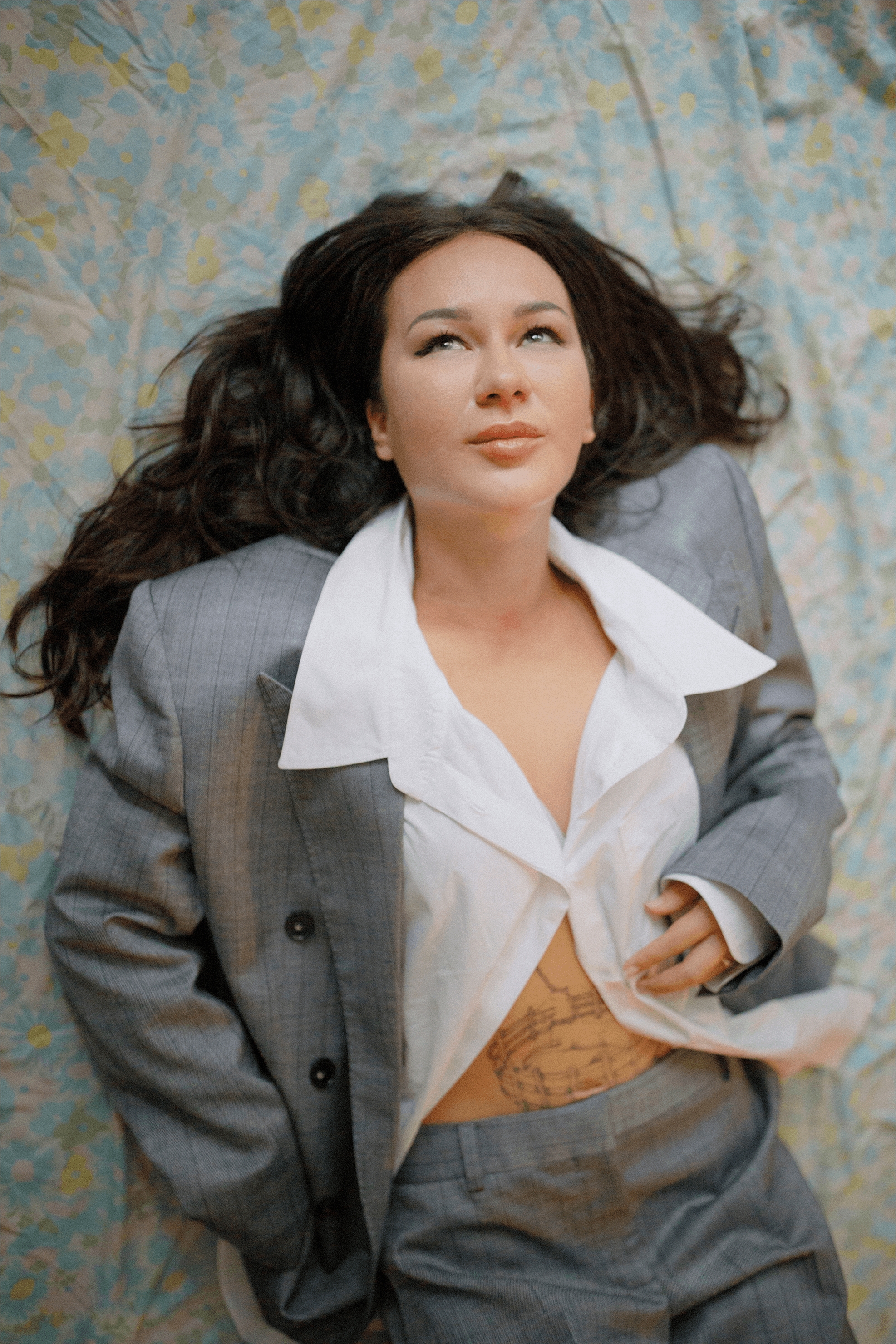
All CLOTHING by Stella McCartney
Shaw engages in songwriting with a clear sense of meaning-making—she creates first, with the meaning honing into focus later—that extends beyond her music and into her relationship with artistic rules more broadly. Shaw, a fervent reader, was knee-deep in a manual on grammar and punctuation at the time of our conversation. “There are all these rules and these style guides,” she observes, “but ultimately, if you have a certain style as a writer where that means you want to disregard these rules, then just disregard them. But this is so you understand what the framework is.” It’s an insight that echoes across artistic disciplines: structural knowledge is not confinement but a permission slip. For Shaw, knowing the rules is less about obedience than about discernment—choosing, consciously, when to follow, when to deviate, and when to float entirely outside charted waters.
Her refusal to be boxed in is especially evident in her sonic palette. Though her earliest work (like her first EP, Uninvited, released in summer 2016) leaned into dreamy bedroom pop and beat-driven hip-hop, her latest material is more protean, reflecting a wider range of obsessions and interests and spanning millennia. “Traditional Irish music actually really influenced the whole album,” she notes. “Those melodies climb and fall in these really interesting, usually major pentatonic scales…I find them very emotive.” These traditional modes, often passed down orally and infused with centuries of cultural memory, find strange and beautiful echoes in Shaw’s digital-native world, most prominently on her single “Pavement.”
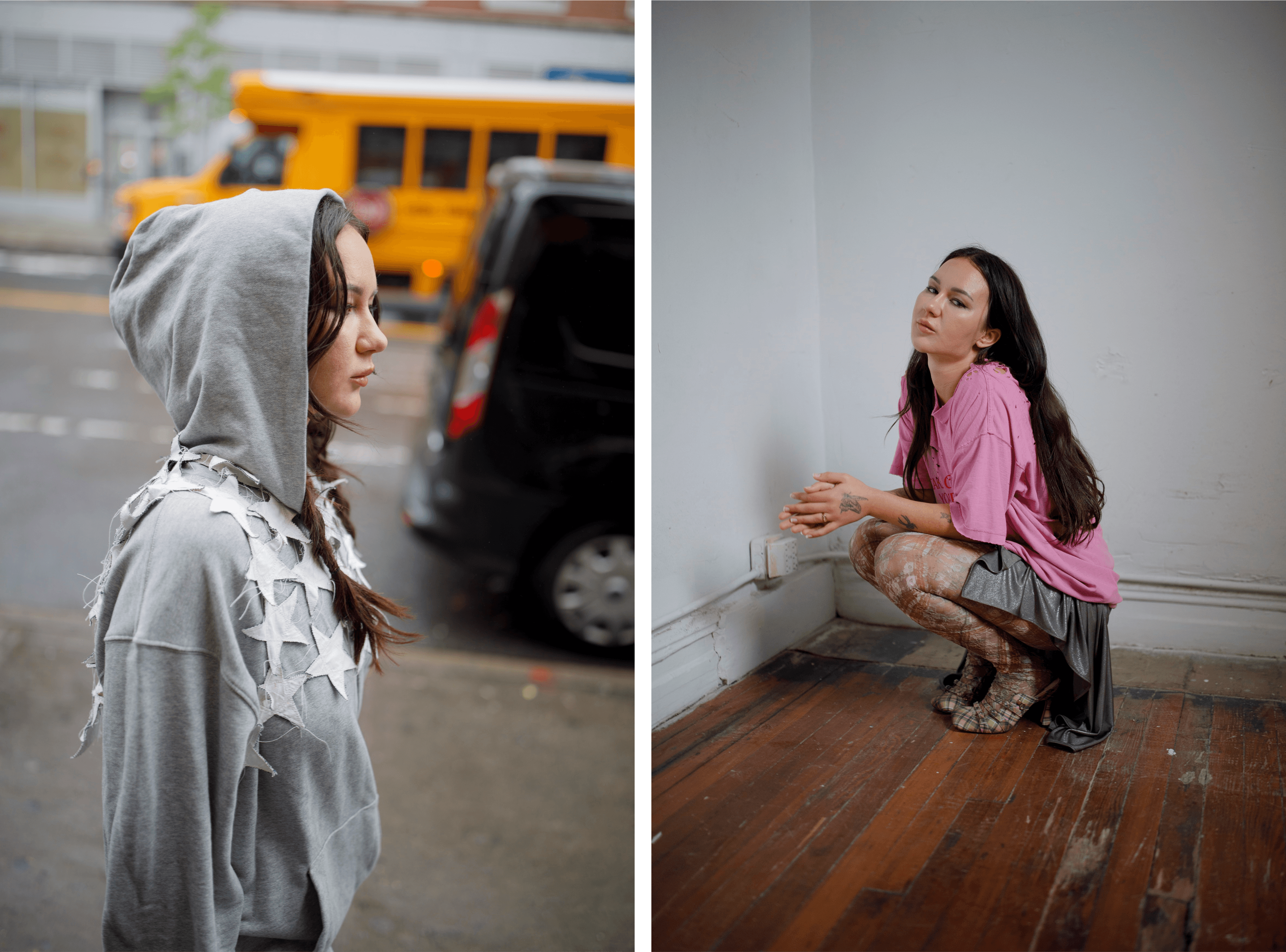
LEFT: VEST by Sam Finger. DRESS by Iseder. RIGHT: T-SHIRT by Emily Dawn Long. SKIRT by Collina Strada. TIGHTS and SHOES by Taottao.
Some of Shaw’s recent work glints with the sheen of dance music—albeit a kind tempered by melancholy. “When I was working on my next single, I was just wanting to be around different people and enjoy being outside and dancing,” she explains. Her single “Hocus Pocus,” released last October, is the latest manifestation of this impulse: buoyant, shimmering, slyly ecstatic. But even here, Shaw’s æsthetic senses resist the impersonal gloss of contemporary club music. “I’m not a big fan of techno,” she confesses. “I like music that has a lot of feeling to it…so it’s melding some of those dancier influences with more broken or rocky elements, what I imagined to be like a bit of magic—or, yeah, a lot of magic—and heart in it.”
Magic, in Shaw’s world, is not a metaphor but a practice. It is the act of seeing the suburbs as a site of wonder—identifying wonder in familiar places. Her longstanding fascination with magical realism—especially as applied to the æsthetics of Australian suburbia—grounds her visual and lyrical universe. “You’re looking at a very real suburban thing,” she says, “but you’re not sure if the beautiful, magic bits about it are real or imagined.” That ambiguity is central: it allows her to depict ordinary spaces without condescension, transforming them instead into dreamlike portals where the domestic becomes divine.
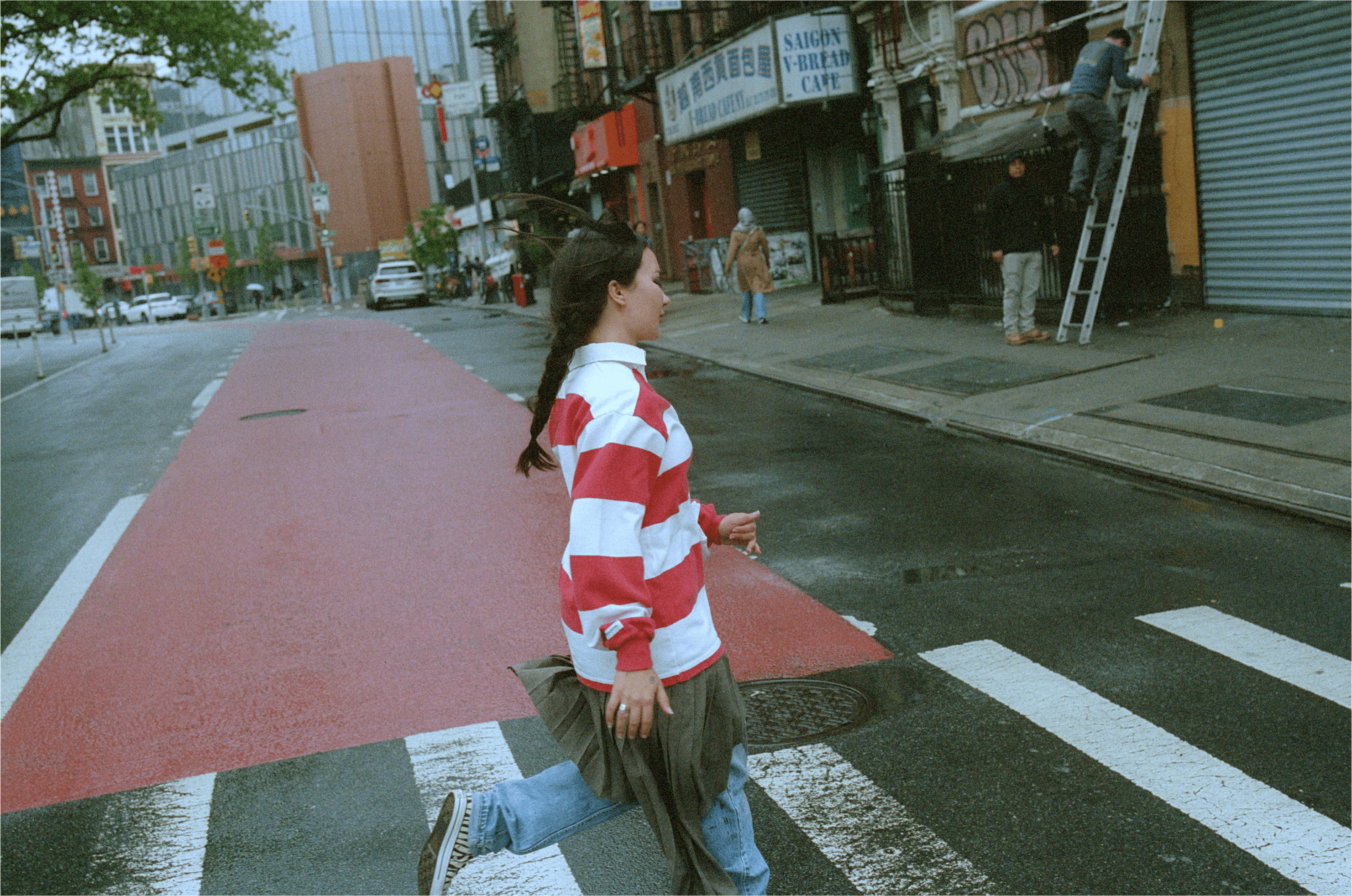
Vintage TOP, JEANS, and SHOES. SKIRT by Taottao. All JEWELRY, Shaw’s own.
Perhaps this is why her music resonates so deeply with listeners who grew up in similar in-between spaces—those psychic borderlands between adolescence and adulthood, between cultural anonymity and the desire for expression. Shaw doesn’t attempt to transcend suburbia; she renders it mythic. She gives it weight, forming it into a shape, showing how the smallest nooks and quietest places can feel vast.
And yet Shaw is not a recluse. She is equally inspired by the energies of other creatives’ visions. She speaks with admiration for SOPHIE—“someone I’ve been extremely inspired by, in terms of vision and boldness”—and is moved by artists like Lonelyspeck, whose recent song “Wishing” has left her “with multiple waves of goosebumps and tears in my eyes.” The Mallrat universe is personal, yes, but it is not isolated. It is open, connected, quite curious, and evermore outward-facing.
Still, home exerts its gravitational pull even as she embarks on her current run of international shows promoting Light hit my face, which kicked off last week in Amsterdam. Touring, she says, has its unmistakable pleasures and irritations. “The thing I miss most about home is kickboxing and my cat— and my shower,” she confesses, laughing. “I have a really nice shower in my apartment.” These are the grounding elements—the rituals and comforts—that tether her reveries to a lived reality. Like her melodies, her life oscillates between departure and return.
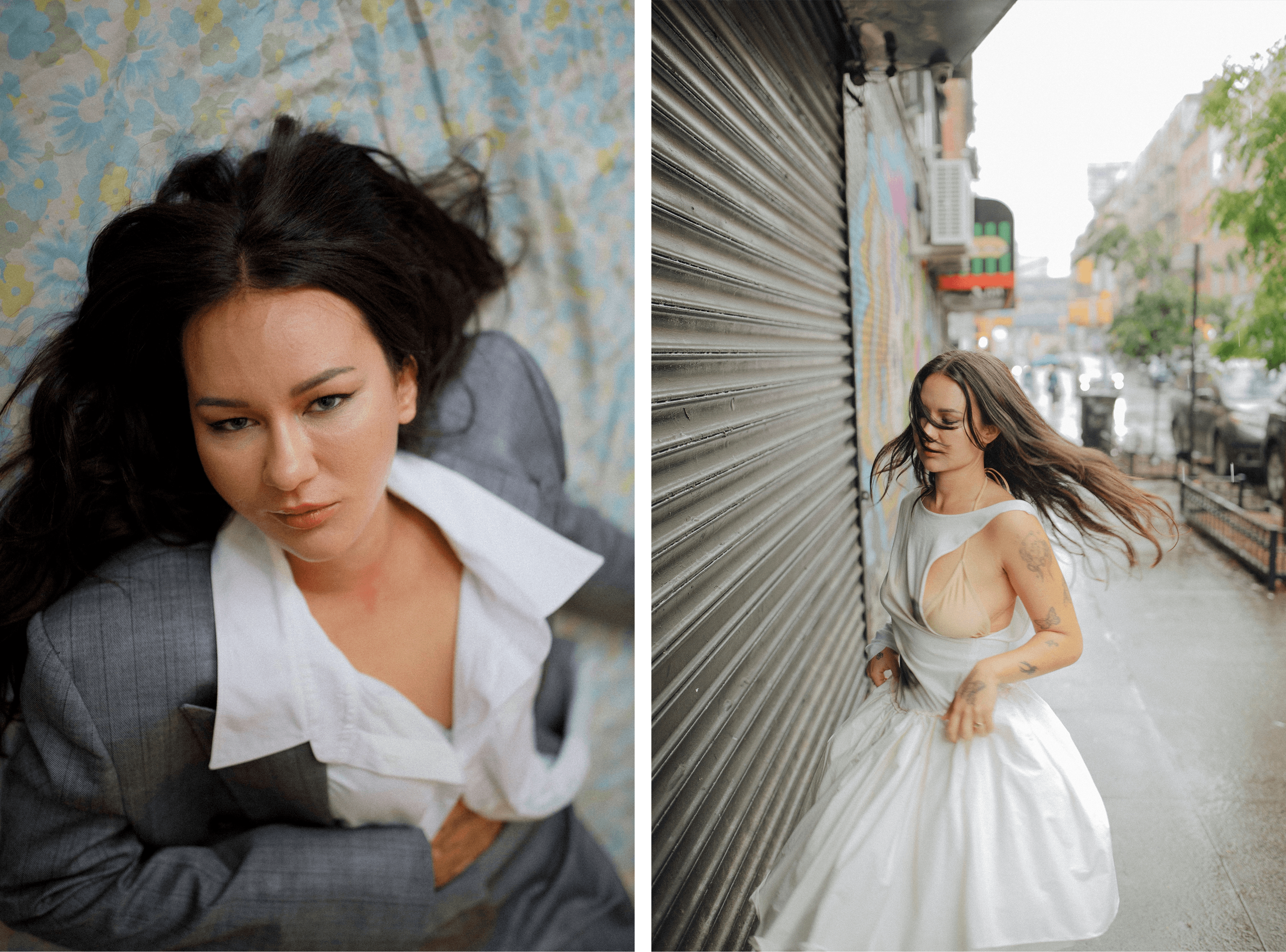
LEFT: All CLOTHING by Stella McCartney. RIGHT: DRESS by Iseder. BRA, stylist’s own.
As for what comes next, Shaw remains characteristically open. She hints at making more rock-oriented music with friends, perhaps even a country-tinged project—though, she notes, “not modern country, more like old country but influenced with indie rock and lots of different things, too.” Her curiosity remains catholic and unforced. There’s no grand rebrand, no genre pivot geared for streaming algorithms, just a continuous evolution paired with a willingness to follow the thread wherever it leads.
“I’m excited for the London show,” she says near the end of our conversation. “And also, I’m excited to go home.” The juxtaposition is telling. For an artist so steeped in the magic of the interstitial, it makes perfect sense that her most anticipated destinations are both the distant city and the familiar apartment. After all, Grace Shaw doesn’t just inhabit liminal spaces—she seeks to convey them for what they are: sites of transformation, places where light, once invisible, breaks suddenly across the face like revelation (or a boxing glove).
Light hit my face like a straight right is out now. Mallrat’s tour continues tonight in London.
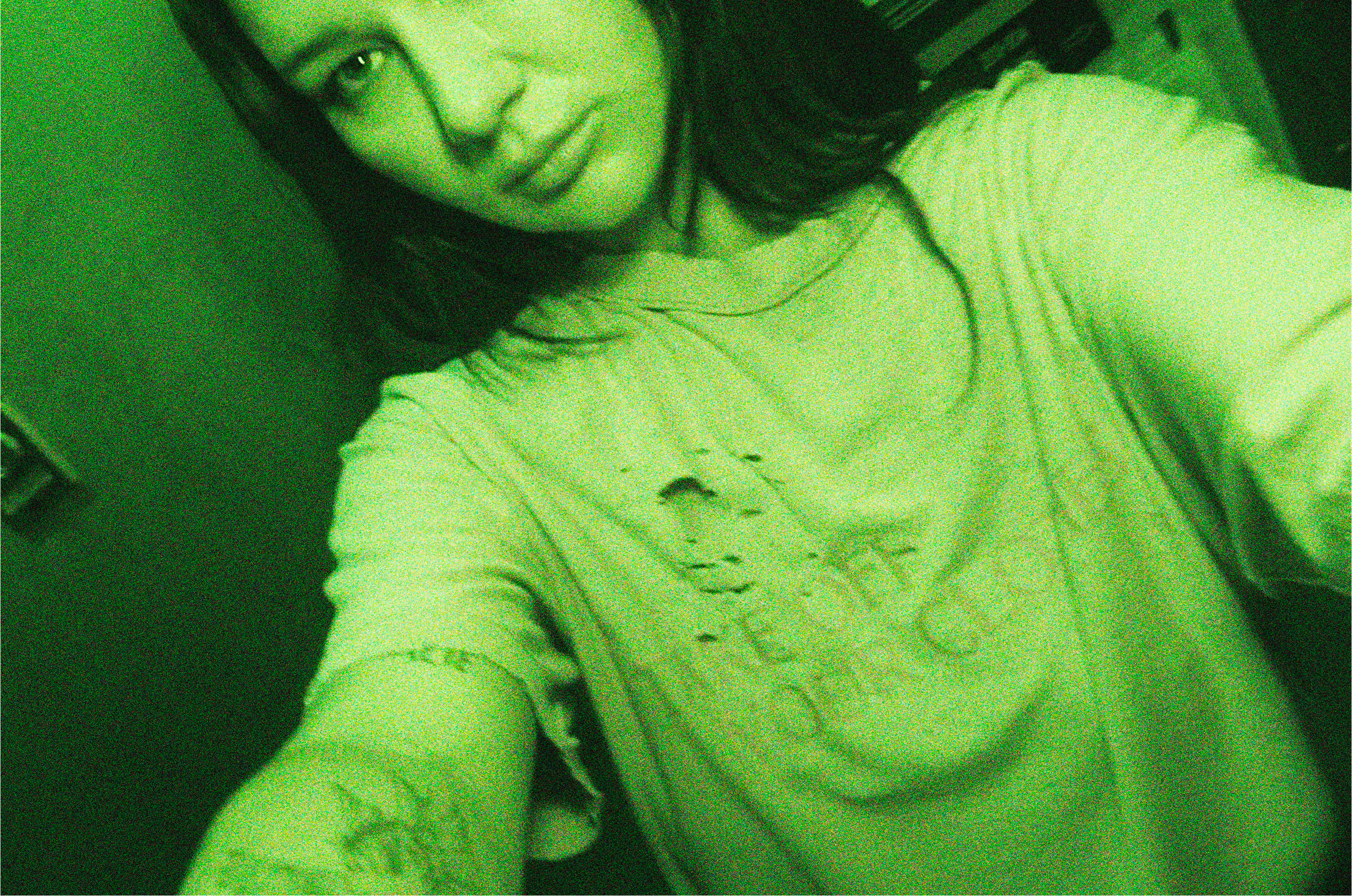
T-SHIRT by Emily Dawn Long
As a nonprofit arts and culture publication dedicated to educating, inspiring, and uplifting creatives, Cero Magazine depends on your donations to create stories like these. Please support our work here.
